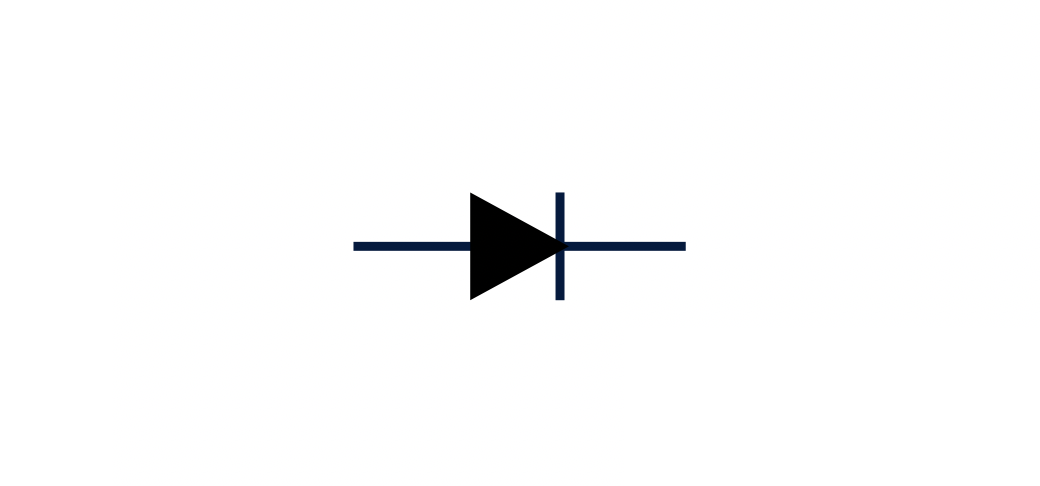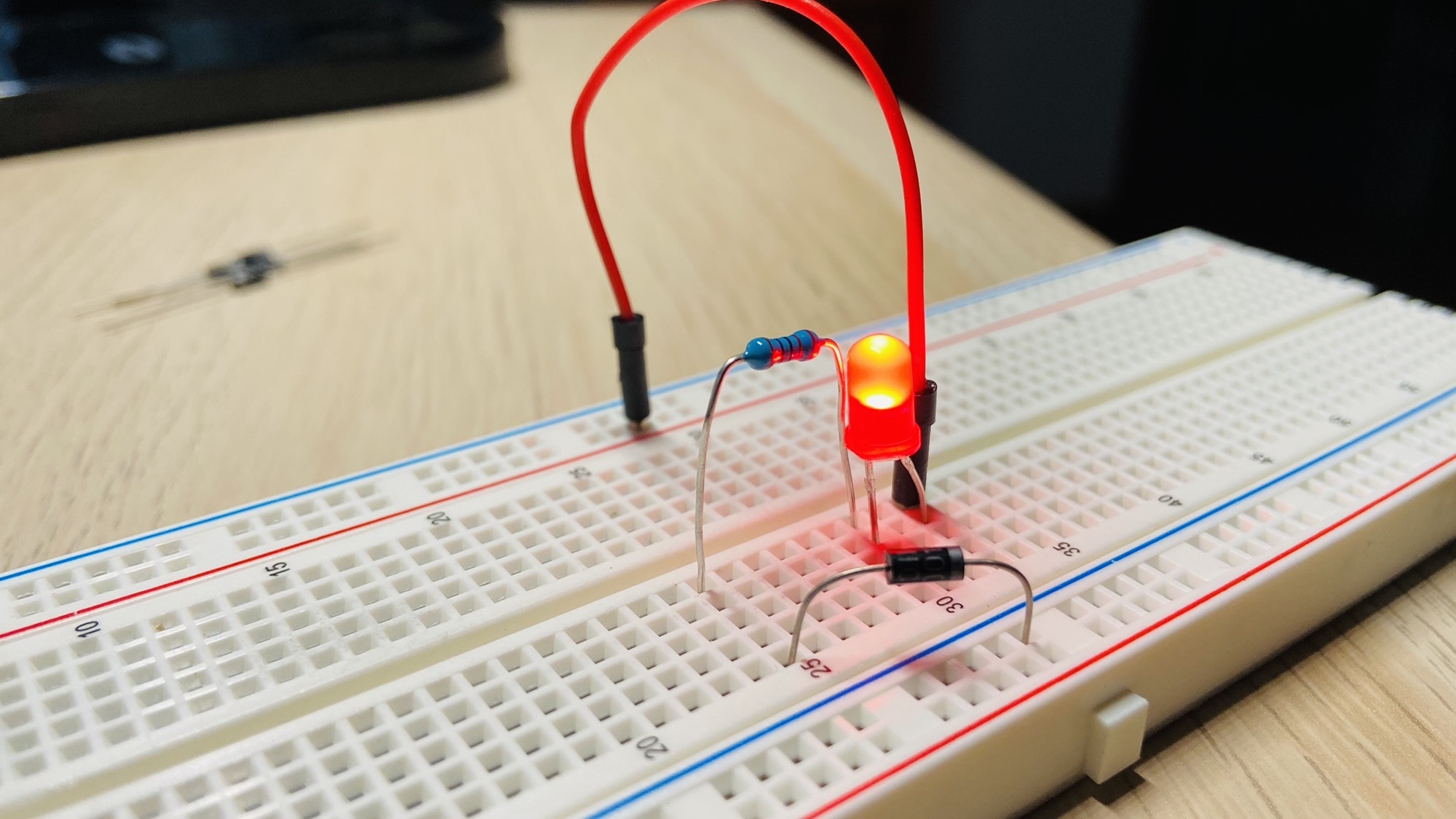Electronic components: Diodes
We talked about Light-Emitting Diodes, diodes that emit a light when the current and tension applied is enough to turn them on. Let’s now talk about diodes in general.
A diode is a tiny component that has one job: make the current flow only in one direction.

This is the symbol for a diode:

Diodes have a direction. Look at the stripe on those diodes picture above. That’s the cathode. It matches the | vertical line in the diode symbol and it indicates the direction the current will flow.
The other side is called anode. Current flows from the anode to the cathode.
If you add the diode in the correct direction to a simple LED light circuit, the LED will turn on because the circuit is correctly closed:

But if you invert the direction, the diode works as an insulator, interrupts the circuit, so the LED does not turn on:

In digital logic, a diode is often used because of this characteristic of being a closed circuit with the correct tension applied, and an open circuit with the inverted tension. We can build AND and OR logic gates using diodes.
A diode is also very useful to the limit current flow, and enables applications like AC to DC converters, protect components from reversed voltage, protect from voltage spikes and much more.
The diodes in the picture are 1N4007 diodes, and they can handle a forward current of 1A and a reverse tension up to 1000V.
Different kinds of diodes can manage different amount of current and can resist to different amounts of reversed voltage.
download all my books for free
- javascript handbook
- typescript handbook
- css handbook
- node.js handbook
- astro handbook
- html handbook
- next.js pages router handbook
- alpine.js handbook
- htmx handbook
- react handbook
- sql handbook
- git cheat sheet
- laravel handbook
- express handbook
- swift handbook
- go handbook
- php handbook
- python handbook
- cli handbook
- c handbook
subscribe to my newsletter to get them
Terms: by subscribing to the newsletter you agree the following terms and conditions and privacy policy. The aim of the newsletter is to keep you up to date about new tutorials, new book releases or courses organized by Flavio. If you wish to unsubscribe from the newsletter, you can click the unsubscribe link that's present at the bottom of each email, anytime. I will not communicate/spread/publish or otherwise give away your address. Your email address is the only personal information collected, and it's only collected for the primary purpose of keeping you informed through the newsletter. It's stored in a secure server based in the EU. You can contact Flavio by emailing flavio@flaviocopes.com. These terms and conditions are governed by the laws in force in Italy and you unconditionally submit to the jurisdiction of the courts of Italy.